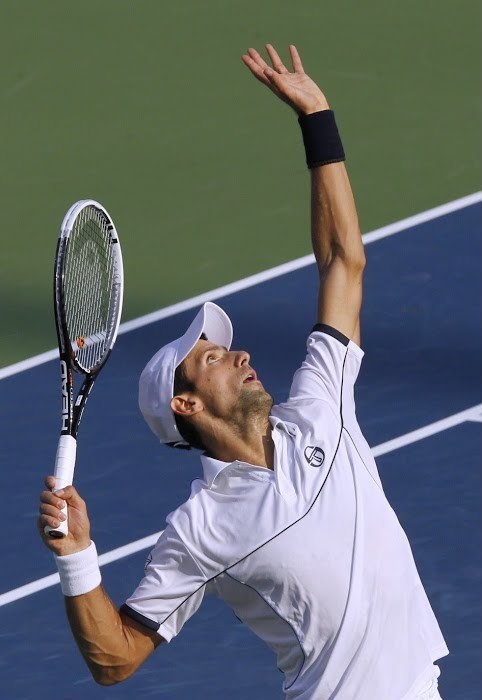Repetitive strain injuries are usually caused by overuse of a particular joint and/or muscle. Over time, repetitive motion of a certain body part can cause damage to ligaments, tendons and muscles, and lead to inflammation and nerve impingement.
Carpal Tunnel Syndrome
Carpal tunnel syndrome is a condition characterized by tingling, numbness and pain in the hand and fingers (particularly the thumb, index, middle and ring fingers). These symptoms are the result of pressure on the median nerve, which runs through a narrow passageway (called the carpal tunnel) from the wrist to the hand. The median nerve provides sensation to the palm side of the hand and allows mobility of the thumb. Inflammation in the wrist or forearm (pronator teres) can entrap the median nerve, leading to carpal tunnel syndrome.
To treat carpal tunnel syndrome, manual therapies may include one, or a combination of, the following:
ART (Active Release Technique)
Medial Epicondylitis
Medial Epicondylitis (golfer’s elbow) is characterized by pain, inflammation and stiffness in the elbow joint. The medial epicondyle is a bony bump on the inside of the humerus, where tendons and muscles of the forearm attach to the elbow. Damage to these muscles and tendons due to repeated strain can lead to pain felt on the inside of the elbow (a similar condition “Tennis elbow” results in pain felt on the outside of the elbow joint). The pain may worsen when swinging a golf club (hence the name “Golfer’s elbow”) or racquet, or picking something up with your palm facing down. Tingling, numbness and muscle weakness or cramping may accompany the pain.
To treat medial epicondylitis, manual therapies may include one, or a combination of, the following:
ART (Active Release Technique)
IASTM (Instrument Assisted Soft Tissue Mobilization
Trigger Point Dry Needling (depending on situation)
Chiropractic Manipulation/Mobilization on the cervical spine and extremities
Lateral Epicondylitis
Lateral Epicondylitis (tennis elbow) is a type of elbow strain that results from tiny tears to the tendons and muscles of the forearm. The lateral epicondyle is a bony bump on the outside of the humerus, where the tendons and muscles of the forearm attach to the elbow. Direct trauma or overuse of these tendons and muscles may cause persistent pain, inflammation and stiffness felt on the outside of the elbow joint. The pain may worsen in response to movements such as turning a doorknob, or playing racquet sports.
To treat lateral epicondylitis, manual therapies may include one, or a combination of, the following:
ART (Active Release Technique)
IASTM (Instrument Assisted Soft Tissue Mobilization
Chiropractic Manipulation/Mobilization to correct alignment and improve range of motion in the joint
Postural Pain
This is your sub-headline
Postural Pain encompasses all types of pain in the low back and neck. Repetitive postures, such as sitting at a desk or driving a car can lead to poor blood circulation, muscle fatigue and imbalance, and improper alignment. Over time, these muscle imbalances and changes in alignment can cause postural pain.
The first step in our treatment plan for postural pain includes diagnosing and, to the extent possible, alleviating, the primary cause(s) of the pain. This may include suggesting changes to a patient’s workstation or environment, encouraging short breaks from a repetitive job or hobby, or meditation to reduce stress. Additionally manual therapies to treat postural pain may include one, or a combination of, the following:
ART (Active Release Technique)
Trigger Point Dry Needling to reduce joint or soft tissue restrictions that may cause pain
Tendinosis
Tendinosis (tendon strain) results from small tears in the tissue in and around a tendon. Scar tissue accumulates around the damaged tendon and muscles thicken, leading to chronic tendinitis and degeneration of the tendon. Pain and joint stiffness often accompany these changes to the tendon and muscle tissue. Tendinosis also increases the likelihood of rupturing the tendon. Overuse of the tendon, muscle imbalances and/or improper alignment may all contribute to the development of tendinosis.
To treat tendinosis, manual therapies may include one, or a combination of, the following:
ART (Active Release Technique)
IASTM (Instrument Assisted Soft Tissue Mobilization
Trigger Point Dry Needling (depending on situation)
Achilles Tendinosis
Achilles tendinosis is common in runners and athletes who participate in sports requiring lots of stop-and-go motion, like soccer and basketball. The Achilles tendon connects the calf muscles with the heel bone. Small tears in the tissue in and around this tendon (usually due to overuse) cause tendinosus. Over time, this condition can worsen and may result in rupture of the Achilles tendon. Symptoms of Achilles tendinosis include pain and swelling in the ankle, stiffness and weakness in the ankle joint, and difficulty pointing the toes.
To treat Achilles tendinosis, manual therapies may include one, or a combination of, the following:
ART (Active Release Technique)
IASTM (Instrument Assisted Soft Tissue Mobilization
Trigger Point Dry Needling (depending on situation)
